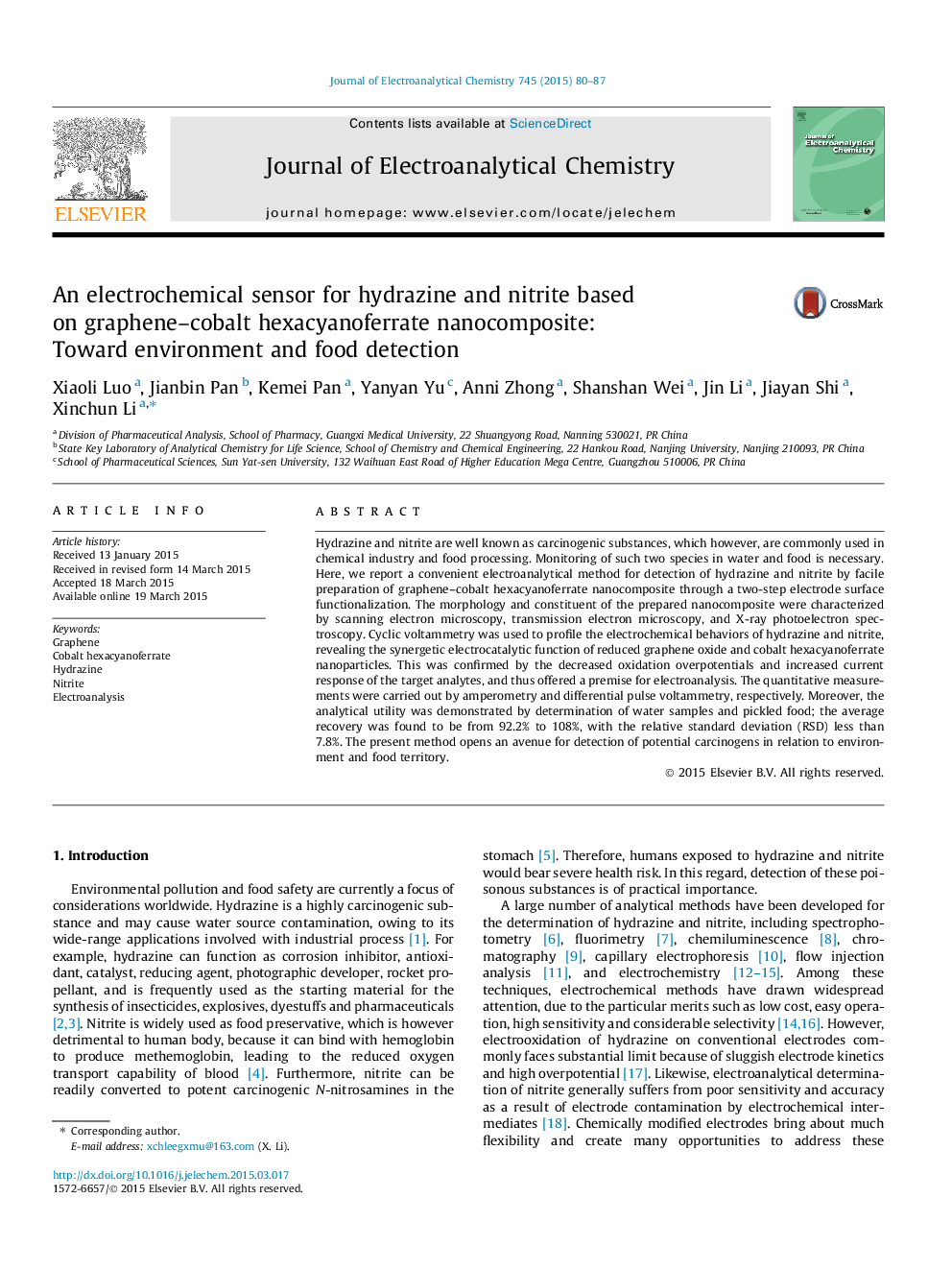| کد مقاله | کد نشریه | سال انتشار | مقاله انگلیسی | نسخه تمام متن |
|---|---|---|---|---|
| 218479 | 463203 | 2015 | 8 صفحه PDF | دانلود رایگان |
• Facile electrochemical preparation of graphene–cobalt hexacyanoferrate nanocomposite is described.
• Electrocatalytic oxidation of hydrazine and nitrite on the nanocomposite is achieved.
• Quantification of such two carcinogens in environment and food samples is performed.
Hydrazine and nitrite are well known as carcinogenic substances, which however, are commonly used in chemical industry and food processing. Monitoring of such two species in water and food is necessary. Here, we report a convenient electroanalytical method for detection of hydrazine and nitrite by facile preparation of graphene–cobalt hexacyanoferrate nanocomposite through a two-step electrode surface functionalization. The morphology and constituent of the prepared nanocomposite were characterized by scanning electron microscopy, transmission electron microscopy, and X-ray photoelectron spectroscopy. Cyclic voltammetry was used to profile the electrochemical behaviors of hydrazine and nitrite, revealing the synergetic electrocatalytic function of reduced graphene oxide and cobalt hexacyanoferrate nanoparticles. This was confirmed by the decreased oxidation overpotentials and increased current response of the target analytes, and thus offered a premise for electroanalysis. The quantitative measurements were carried out by amperometry and differential pulse voltammetry, respectively. Moreover, the analytical utility was demonstrated by determination of water samples and pickled food; the average recovery was found to be from 92.2% to 108%, with the relative standard deviation (RSD) less than 7.8%. The present method opens an avenue for detection of potential carcinogens in relation to environment and food territory.
Figure optionsDownload as PowerPoint slide
Journal: Journal of Electroanalytical Chemistry - Volume 745, 15 May 2015, Pages 80–87
